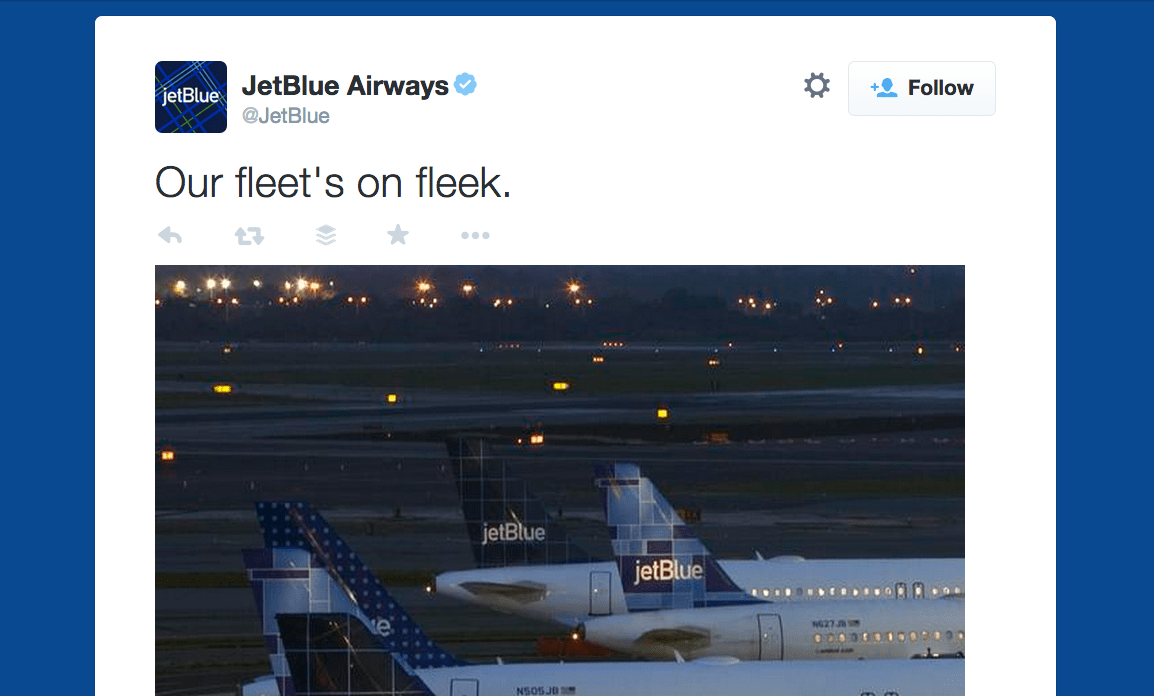On a rainy day in February 2012, several hundred representatives from brands, software makers, and advertising agencies gathered at the American Museum of Natural History in New York City. The event, held by Facebook months before its IPO, was meant to be a schmoozy affair. (Alicia Keys performed beneath a 94-foot fiberglass whale suspended from the ceiling.) But as the day went on, it was clear Facebook (FB) had an agenda beyond wooing Madison Avenue. Each presentation, workshop and interview carried an implicit message: Brands, we’re letting you on our platform. Please don’t screw this up for us.
Presentations made during the event emphasized the importance of “quality” content. Think of brands as people, declared Carolyn Everson, Facebook’s vice president of global marketing solutions. At the end of the day, attendees were given posters that said “think / ̶m̶a̶r̶k̶e̶t̶ / share,” with the word “market” struck through, as if to say: Marketers, please don’t market.
It’s only logical Facebook would want to hold its advertisers’ hands; bad advertising risks turning off users. Facebook’s hand-holding (brand-holding?) Was especially crucial in 2012, when advertising within social media feeds was a relatively new concept. With the introduction of Facebook’s Promoted Posts, advertisers were, for the first time, allowed in the main content feed of a website. Previously, they had been relegated to the Right Rail of Banner Blindness, so this was huge.
With great permission comes great responsibility, though, and Facebook likely suspected that brands would screw it up. (Plenty of them have: See the Condescending Corporate Brand Page for examples.) As social media platforms consume more and more of our attention, marketers spamming, annoying, and, well, marketing, on them has only spread.
The biggest challenge to maturing social media networks as they monetize is keeping marketers in check. Creating quality content is the number-one topic that Twitter (TWTR) talks to marketers about, according to Adam Bain, Twitter’s chief revenue officer. “People are ready to go big on Twitter and they need something to promote,” he said. Translation: Marketers want to spend their money on our social media platform, but they still don’t know what to say. (Some are saying “Bae.”) Bain made his comments at the Code/Media conference last week in Laguna Niguel, Calif.
Likewise, Pinterest must help advertisers create content for its platform, said Joanne Bradford, head of partnerships for the company said at the same conference. Like Facebook’s marketing conference in 2012, Pinterest, which has only recently begun to pursue revenue, is hosting ad-training courses for brands. It calls its program the Pinstitute. “We’re teaching them and they’re really excited about earned media and engagement,” she said.
Twitter has designed its advertising tools to incentivize popular and successful Tweets, Bain said. “Traditional display ads reward you for being loud. Twitter wanted to reward companies for being good.”
Rewarding brands for good behavior on social media raises a question about bad behavior. Should Twitter, Pinterest, Facebook, and Instagram penalize spammy ads? Annoying a platform’s users aren’t the only cause for concern. If a marketer spams users and fails to gain traction, that advertiser may write off a platform as ineffective. Facebook found itself in this situation one week before its IPO, when the CMO of General Motors pulled the company’s $10 million ad budget and declared that Facebook ads didn’t work. The automaker has since returned to spending on Facebook, but the headline was enough to put the entire social media category on defense.
Promoted or sponsored content has proven to be social media’s preferred method of monetization, be it Promoted Posts on Facebook, sponsored photos and videos on Instagram, Promoted Pins on Pinterest, or Promoted Tweets, Trends, or Accounts on Twitter. Which is why all of these companies remain wary of any one brand or company “poisoning the well” with bad practices. Or, as one marketer put it to me in conversation recently, “They’re scared someone’s going to pee in the pool.”
